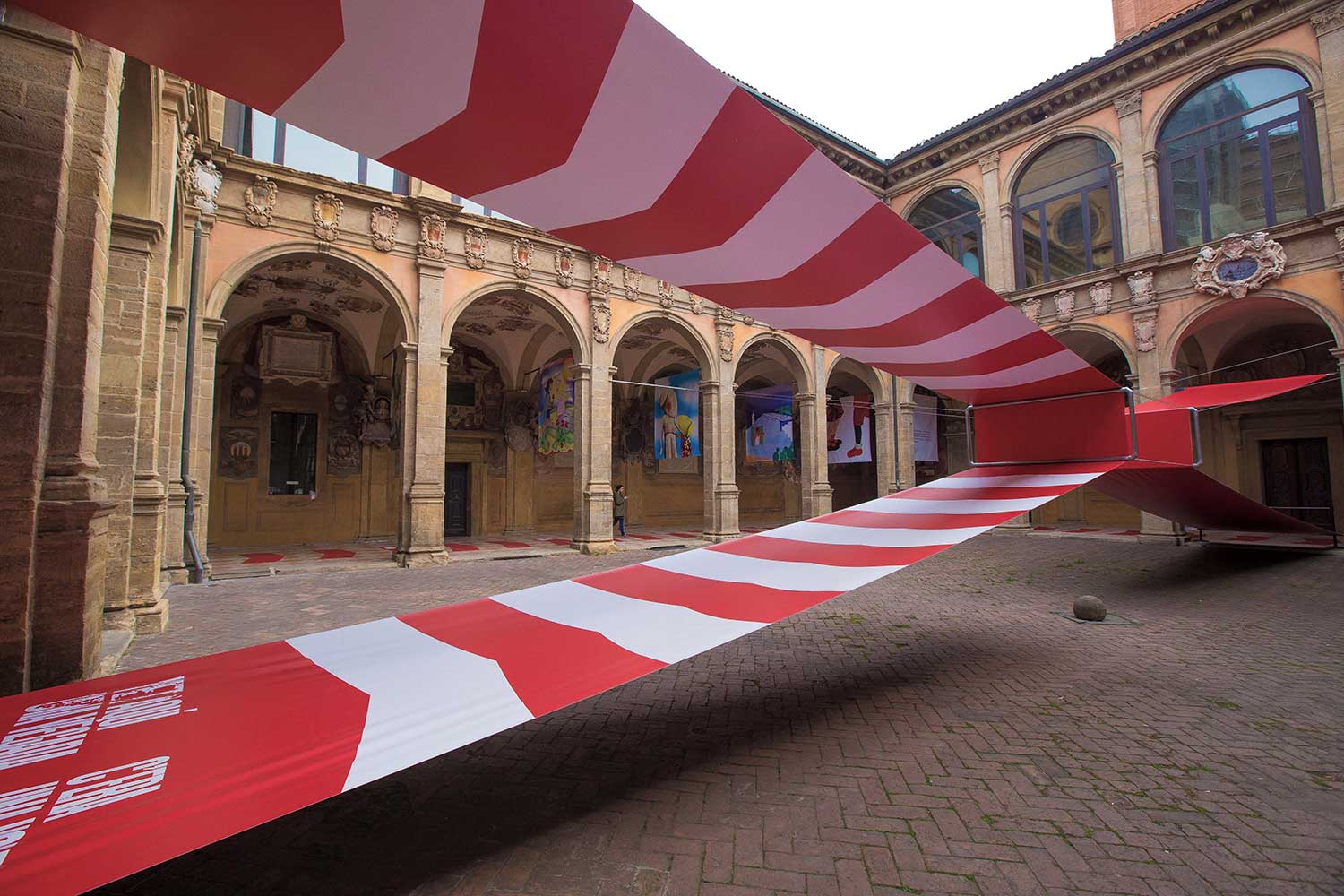

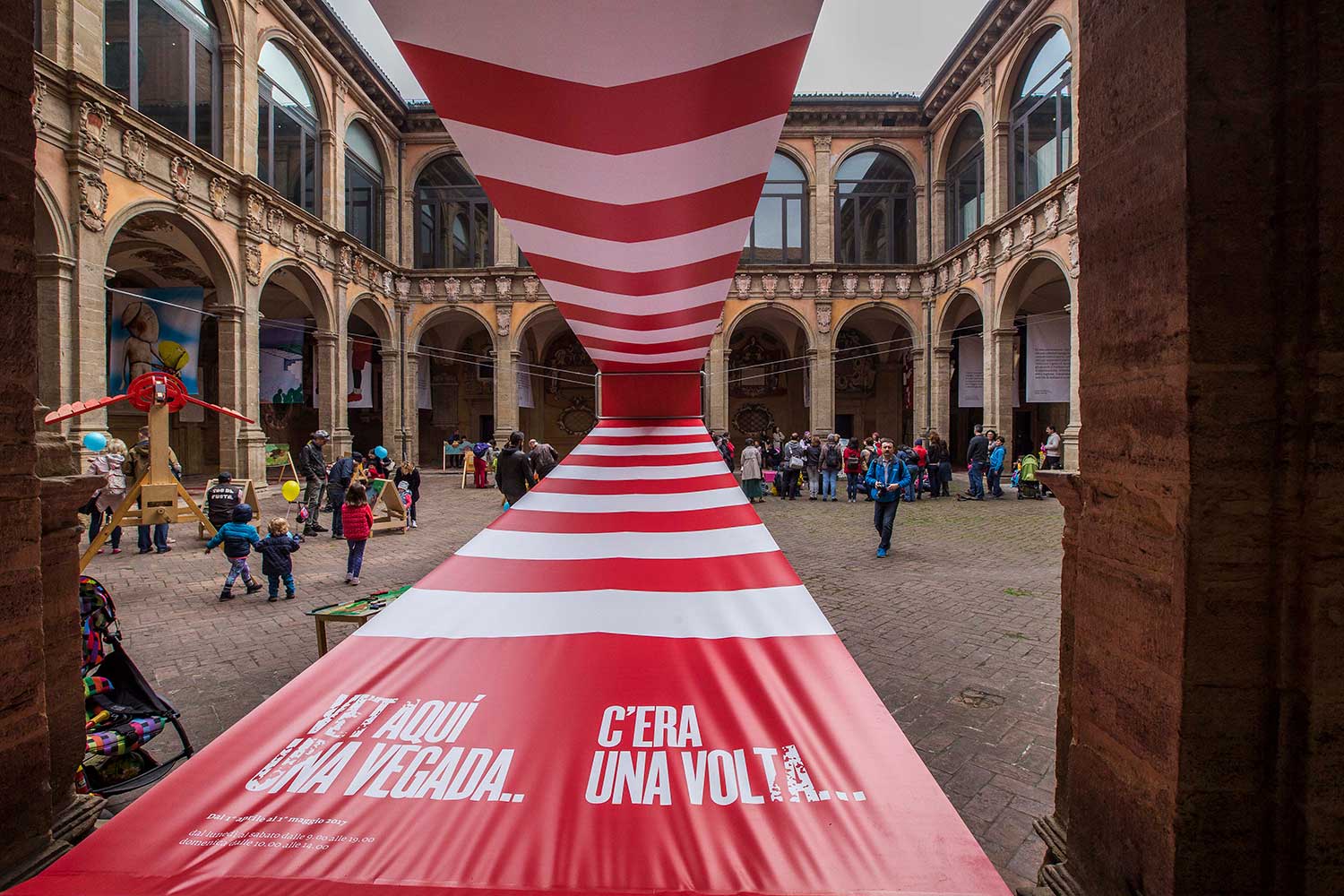
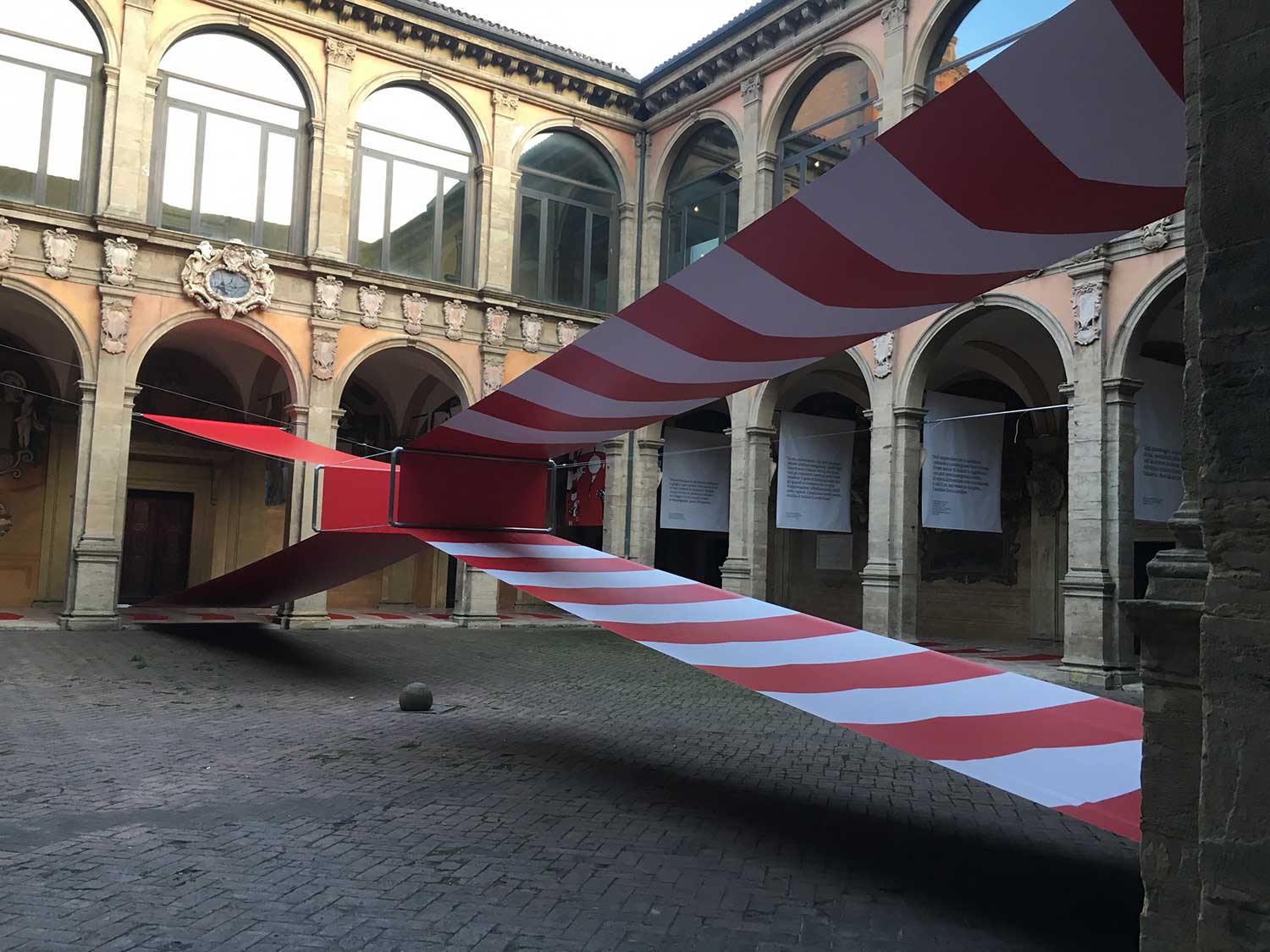
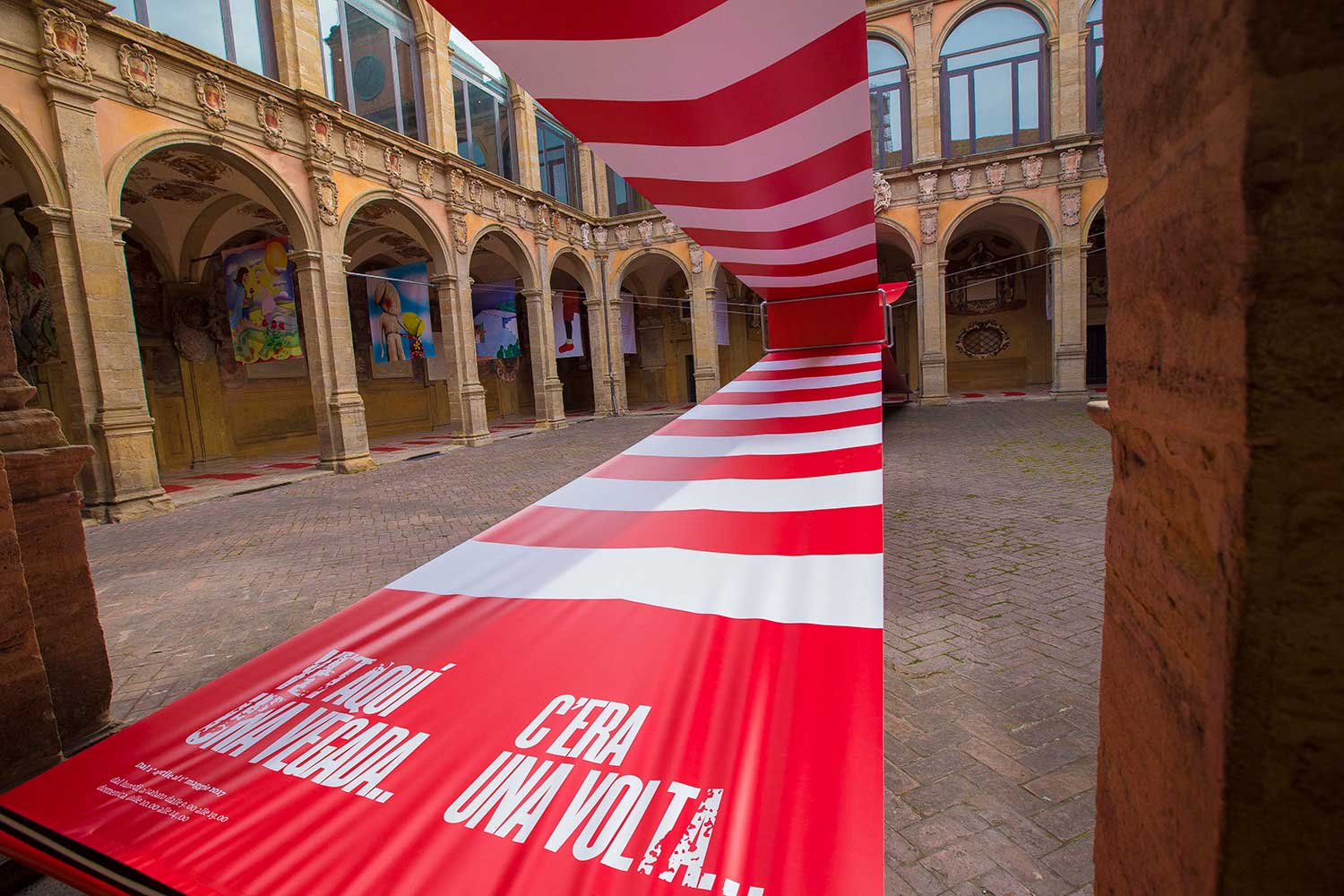
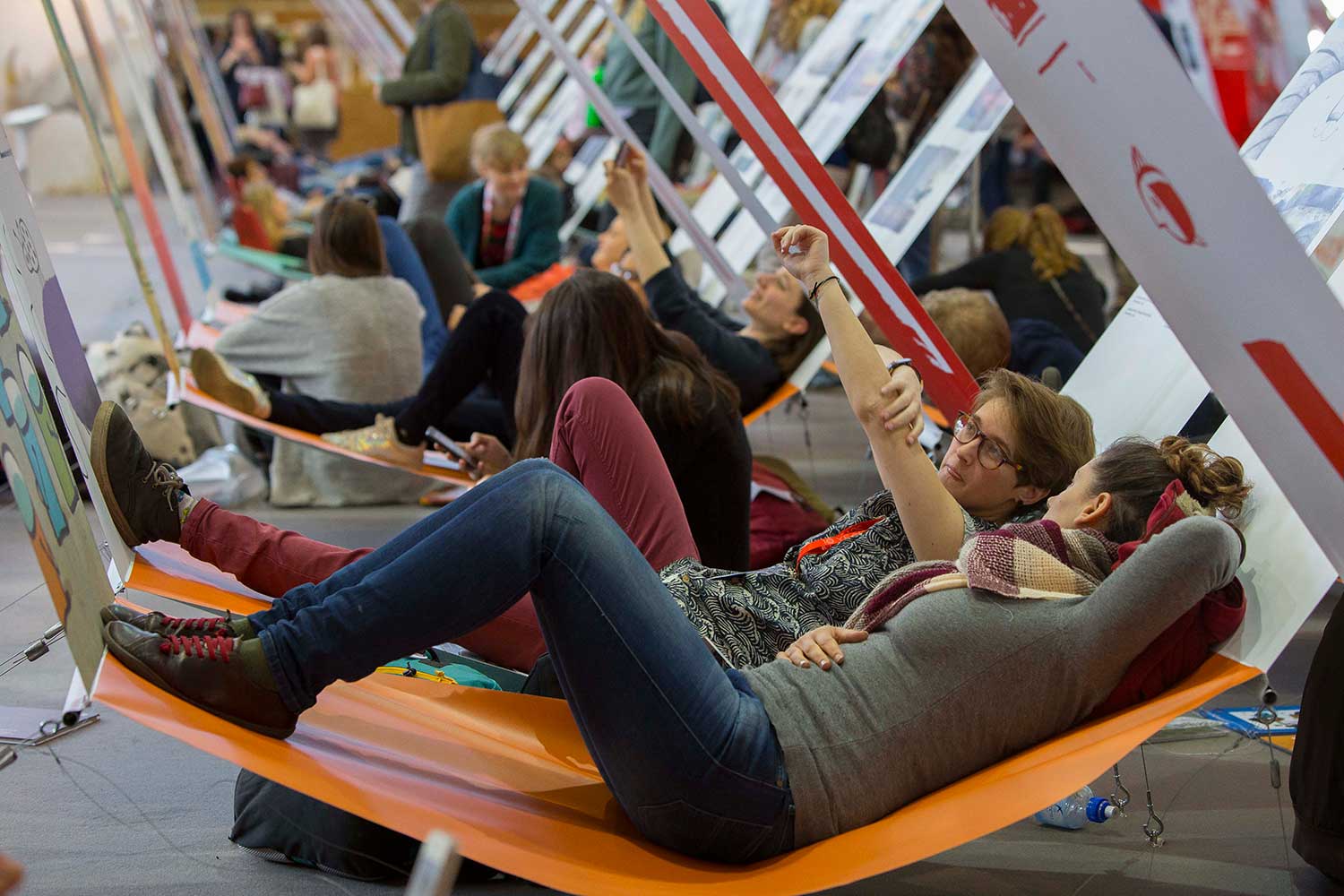
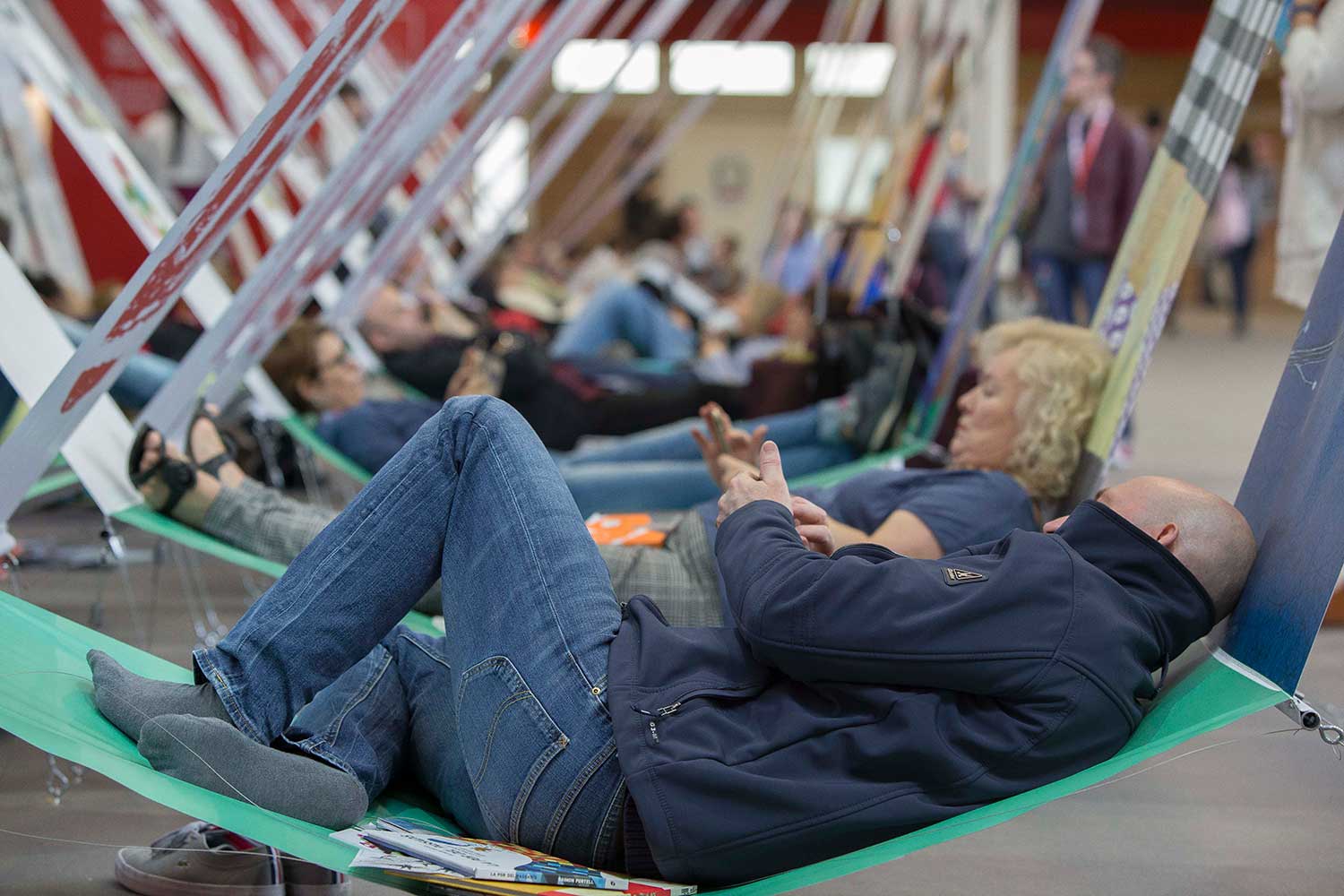
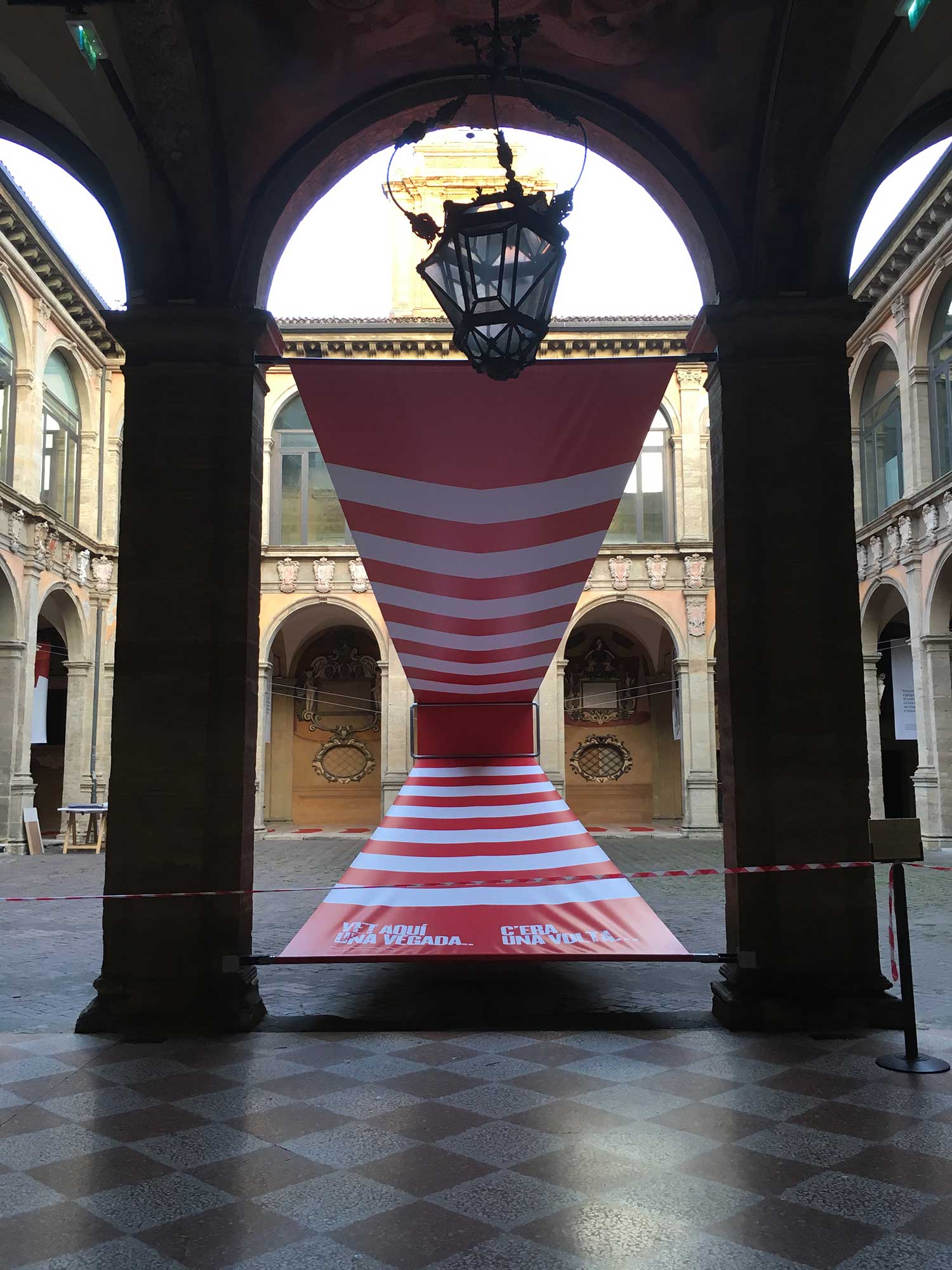
The first intervention is on three of the four sides of the cloister, inside the arches. Two-sided printed fabrics hang from the metal buttresses on most arches. These stelae support the graphic information of the illustrators, and mark a color rhythm that coexists with the chiaroscuro of the light that enters through the arches.
The second intervention sets the direction of the visit, and responds to the authors accompanying the illustrators. A series of colored arrows, fixed to the floor through a removable and harmless adhesive material on the existing floor, defines the direction of the visit and draws in color the perimeter of the caluster and therefore, the limits of the intervention.
Finally, in the middle of the courtyard, a central body is located that wants to be a pedestrian recalm that strolls down the street and that will distinguish at the end of the access perspective a large object-poster. This central body is made of two large contrasting fabrics; these fabrics are stretched from the structure of the building to form a pair of large cones arranged with their backs to each other. The intention of this central body is to reinforce (and magnify) the depth of the perspective from the street, but it also qualified the emptiness of the patio.
Cones are built through tension. In the central arch of the cloister, on two of its sides, a pair of estimbadors is placed, from where the cables that hold the fabrics are tightened, enabling stability without affecting the existing building. The geometry that makes up the central body allows the circulation of visitors underneath.